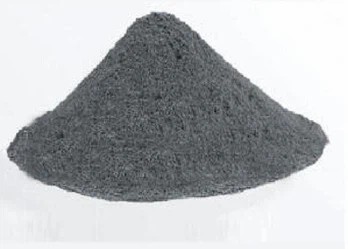PRODUCTS
Refractory Spray Materials
Products Description Refractory spray material is a kind of unshaped refractory material, which is a new type of refractory material with good fluidity after adding water and stirring without firing and pressing. Its masonry structure has fewer joints, strong integrity, good airtightness, and can avoid powder infiltration. In principle, any kind of castable or any kind of self-flowing material and pumping material can be used as dry spraying material or wet spraying material, just adjust the particle size composition and the type and amount of additives. Features Refractory Spray Materials Are
Composition: Premium materials such as high alumina oxide, magnesium oxide, and silicon carbide, with customizable composition based on client requirements.
Form: Available in powder, brick, board, and castable forms to suit various application needs.
Refractoriness: Standard range from 1200°C to 1800°C, with options for higher temperature customization.
Application Fields: Widely used in industries such as steel, cement, glass, and petrochemicals for furnace lining and insulation.
Packaging: Options include 25 kg bags, bulk bags, and custom packaging solutions compliant with global transportation standards.
Introduction
Our experienced R&D team can customize the material, form, and size according to your specific application needs while ensuring compliance with international quality standards. With rigorous quality control and advanced production facilities, we guarantee products with high refractoriness, excellent compressive strength, and long-lasting durability. Whether you are in the steel, cement, glass, or petrochemical industry, we are your trusted partner, supporting the success of your projects.
For customization inquiries, please feel free to contact us. We will provide tailor-made solutions based on your requirements.
Refractory Spray Materials Details
Products Description
Refractory spray material is a kind of unshaped refractory material, which is a new type of refractory material with good fluidity after adding water and stirring without firing and pressing. Its masonry structure has fewer joints, strong integrity, good airtightness, and can avoid powder infiltration.
In principle, any kind of castable or any kind of self-flowing material and pumping material can be used as dry spraying material or wet spraying material, just adjust the particle size composition and the type and amount of additives.
Features
Refractory Spray Materials Are Widely Used, Which Is Convenient For Comprehensive Utilization Of Resources.
1.It is easy to anchor and can effectively prevent the wall from protruding.
2.The construction is convenient, the labor intensity is low, the masonry efficiency is high, and the furnace can be mechanized.
3.The delivery time is short, which can reduce the inventory and cost accordingly.
Technical Sheet
| Project | RSM-1 | RSM-2 |
| Al₂O₃ | 45 | 35 |
| SiO₂ | 40 | 50 |
| Bulk Density(g/cm³) | 1.3 | 0.55 |
| Maximum operating temperature(℃) | 1350 | 1100 |
| Compressive strength(Mpa)110℃drying | 8 | 1±10%(1100℃*3h) |
| Compressive strength(Mpa)1200℃*3h | 10 | |
| Thermal Conductivity≤(W/m*k) | 0.3 | 0.15 |
Precautions
1.Appropriate amount of water should be added
2.The air pressure and air volume of the injection should be appropriate
3.The distance and angle between the nozzle of the spray gun and the surface to be sprayed should be appropriate: the spray gun should be moved up and down, left and right to ensure that the thickness of the sprayed layer is uniform.
4.The thickness of each spray should not be too thick: too thick is easy to peel off, generally not more than 50mm.
5.Control the plasticity and coagulation of the material: the material can be well adsorbed on the spray coating, and can be solidified quickly to obtain a certain strength.
Application
Refractory spray material can be used in various industrial furnaces, especially as the main material for repairing metallurgical furnaces. In the process of metal smelting, due to the wide use of this material for timely and reasonable gunning of metallurgical furnaces, the life of the furnace lining has been significantly improved. The erosion surface of the furnace lining is large, and the wet method is better for hot gunning, and the dry method is more used to fill the severely eroded parts.













